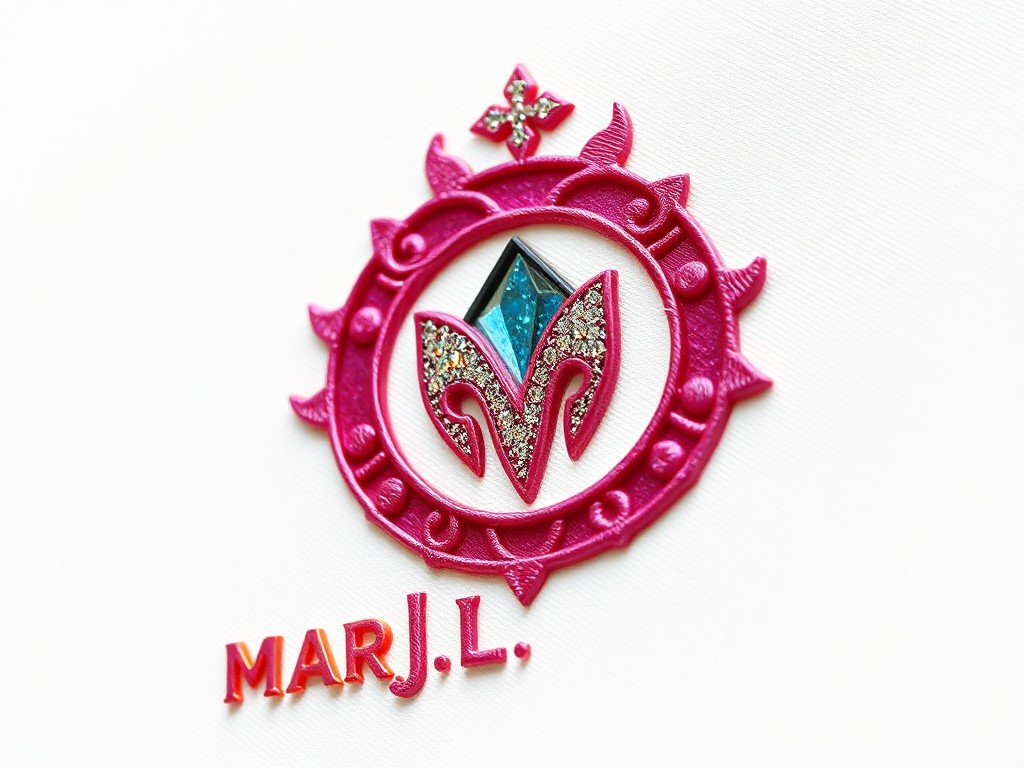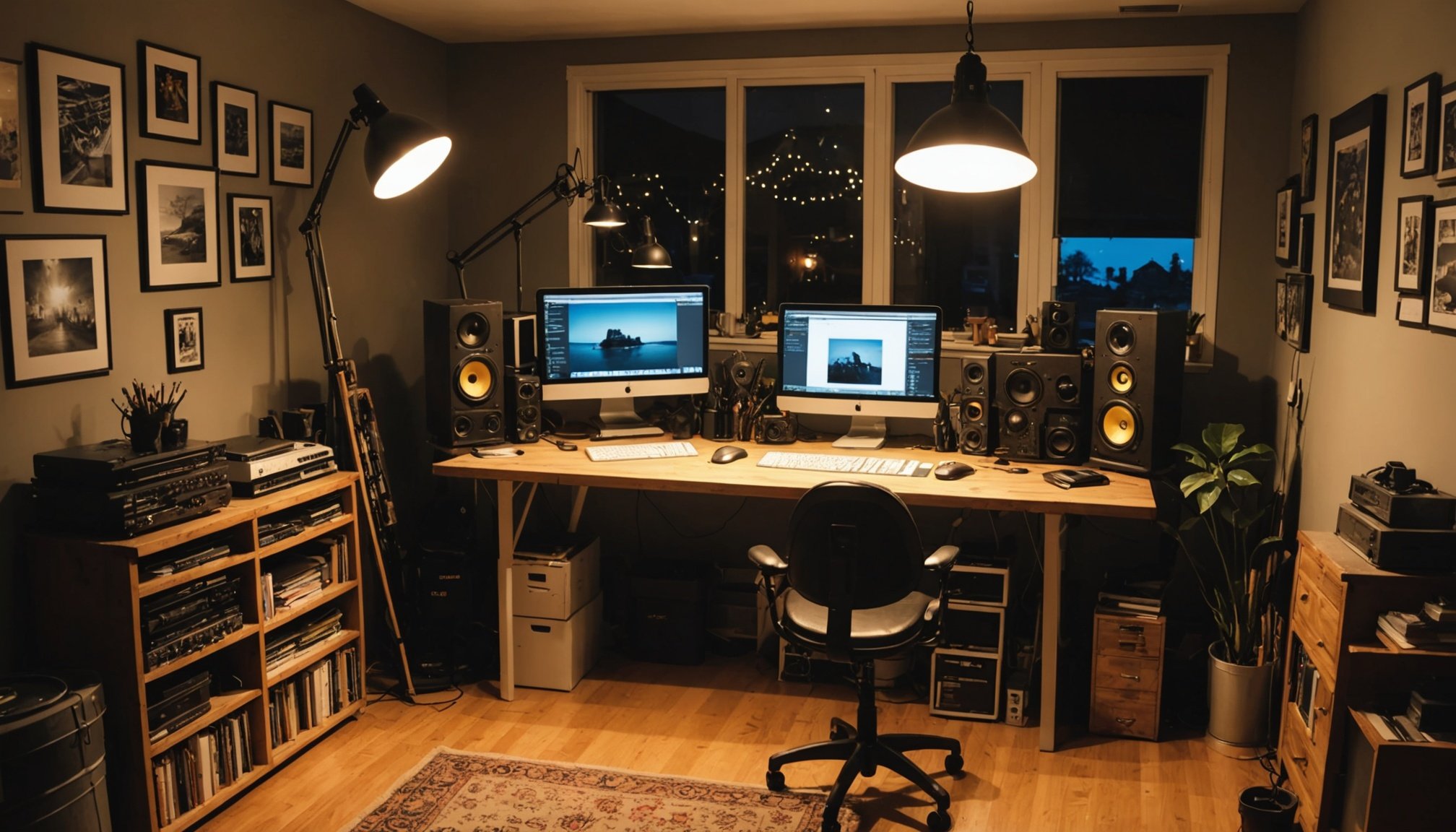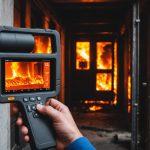Understanding the Importance of Lighting in Art Studios
In any art studio, the lighting importance cannot be overstated, especially as it influences artists’ moods and creativity. The atmosphere of an art studio is shaped significantly by the kind of lighting used, directly impacting the overall art studio ambiance. Proper lighting can stimulate the creative mind, providing a welcoming environment that promotes artistic productivity.
When considering lighting decisions, it’s crucial to distinguish between natural and artificial lighting. Natural light offers a full spectrum, allowing for true-to-life colors, which is particularly beneficial for painting. On the other hand, artificial lighting can be adjusted to various creative space lighting settings to suit different artistic needs or times of the day. It is about striking the right balance between these two for an optimal creative session.
In parallel : Transform your bathroom: the definitive guide to choosing perfect water-resistant wallpaper
Lighting also profoundly affects color perception and art presentation. Poor lighting may distort colors, leading to artworks that look different outside the studio than they did inside. Artists must therefore prioritize lighting that accurately displays colors, ensuring the art remains true to the creator’s vision. Understanding these nuances helps facilitate an ideal setting for any artist’s creative pursuits.
Types of Adjustable Lighting for Art Studios
When it comes to adjustable lighting in art studios, there are several studio lighting options that artists can consider. These options are designed to cater to specific needs such as color accuracy, energy efficiency, and versatility.
Also to discover : Transform your outdoor yoga retreat: aligning your sanctuary with the serenity of nature
Overview of Different Lighting Types
Choosing the right lighting solutions for your art studio can make a significant difference. LED lighting stands out for its energy efficiency and long lifespan, providing consistent illumination with minimal electricity use. Incandescent lighting, on the other hand, offers a warm glow that can enhance the ambiance, although it consumes more energy.
Benefits of LED Lighting
LED lighting is known for its energy efficiency and longevity. It offers customizable brightness levels and color temperatures, making it incredibly versatile for art studios. LED lights can mimic natural daylight, which is crucial for accurate color rendering and preventing eye strain during long working hours.
Pros and Cons of Incandescent Lighting
Incandescent lighting has its own set of advantages and disadvantages. While it provides a high color rendering index, which is great for true color visibility, its energy consumption and shorter lifespan can be a downside. Comparing incandescent and fluorescent options, incandescent bulbs tend to be less energy efficient but offer a unique warmth preferred by some artists. Fluorescent lights are more economical and longer-lasting, yet might not meet all needs regarding color accuracy.
Essential Techniques for Setting Up Lighting
Setting up a compelling lighting setup can transform your studio space into a professional haven. Whether you’re a beginner or seasoned professional, understanding the nuances of studio lighting placement can significantly impact your work’s quality.
Start with best practices for positioning lights. Consider a three-point lighting setup: key light, fill light, and backlight. This technique creates depth by illuminating the subject from various angles. Studio lighting placement is crucial in avoiding unflattering shadows. Position the key light at a 45-degree angle to the subject’s face, ensuring it’s the strongest light source.
Layering different types of ambient lighting can enhance your setup further. Use softbox lights for a diffused glow or LED panels for precision control. Layering these with studio lighting placement allows for dynamic and adaptable lighting environments.
Creating focal points is another essential technique. Focus lights to highlight specific areas and create contrast, drawing attention to your subject. Ambient lighting setup is handy here, as it provides a continuous light source, softening harsh shadows.
Remember: the key to a successful lighting setup is understanding the synergy between different elements and creatively experimenting to find what works best for your particular scene or subject.
Product Recommendations for Adjustable Lighting Systems
Adjustable lighting solutions provide flexibility and control over illumination, essential for creating the perfect atmosphere. Whether you need to spotlight an artwork or just adjust the ambiance of a room, the right lighting makes all the difference.
Top Adjustable Floor Lamps
Floor lamps are versatile, providing both style and functionality. Among the best lighting for artists, models with multiple brightness settings and adjustable arms enable directing the light exactly where needed. Look for options with dimmable bulbs and a wide angle of adjustment to suit various tasks and moods.
Best Adjustable Desk Lamps
Desk lamps should include features such as swivel heads and dimming capabilities. The recommended lighting products in this category often boast LED technology for energy efficiency and minimal heat emission. An ideal lamp offers ease of control for precise lighting settings during detailed work.
Recommended Wall-mounted Lighting Systems
Wall-mounted lighting adds elegance and is great for saving space. Key features to seek in these systems are adjustable arms and embedded dimming features for tailored lighting solutions. Reviews highlight systems that blend seamlessly with decor while providing excellent luminosity.
When deciding between budget-friendly and premium options, consider the longevity and adjustability you need. Premium systems might initially be an investment, but they often last longer and offer superior light control.
Designing the Ideal Ambiance for Your Art Studio
Creating a captivating studio ambiance design can significantly enhance your creative process. One crucial aspect is the color temperature of your lighting. Choosing the right temperature can influence your mood and focus. Warm, yellowish light tends to create a relaxed atmosphere, perfect for brainstorming and sketching sessions, while cooler, bluish light helps improve concentration and attention to detail for tasks like working on fine lines or intricate details.
Combining lighting with interior design elements further elevates the lighting mood atmosphere. Position your lights to highlight specific features of your studio, like textured walls or unique furniture pieces. This combination not only accents the aesthetics but also maximizes the functionality of your space. Consider using adjustable lamps or track lighting to focus on different sections of your workspace as needed.
Personalizing your studio space through distinct lighting choices allows you to tailor the environment to your creative needs. Use a mix of overhead lighting, floor lamps, and even fairy lights to create layers of illumination. Additionally, incorporating dimmers or smart bulbs can offer flexibility, enabling you to alter the ambiance according to the task or time of the day. This personalization fosters a creative space aesthetics that is uniquely yours.
Visual Aids and Examples of Successful Setups
Exploring successful lighting setups can significantly enhance the ambience of any art studio. Understanding various art studio examples provides lighting inspiration and innovative solutions.
Case Studies of Renowned Artists’ Studios
Analyzing the lighting setups of famous artists gives valuable insights into successful lighting setups. Studios of individuals like Frida Kahlo utilised abundant natural light to create a seamless working environment. This serves as a blueprint for integrating both natural and artificial light to optimise an artist’s workspace.
User-submitted Studio Lighting Designs
Community contributions offer diverse ideas to inspire creativity. Artists worldwide share images and descriptions of their setups, demonstrating how varied lighting adaptations can be implemented successfully in distinct spaces. Platforms convening these ideas allow a space for dialogue, fostering unique developments in art studio lighting.
Creating Mood Boards for Ambiance Ideas
Crafting a mood board is instrumental in ideating your lighting project. Begin by sourcing images that represent your desired aesthetic. Include a mix of materials, colour palettes, and fixture designs that resonate with your vision. This method provides a concrete visualisation of how different elements can come together to create a harmonious setting. The result is a coherent guide to regulate the emotional and visual appeal of your studio’s ambiance.
Common Pitfalls and Solutions in Studio Lighting
Navigating studio lighting can be tricky, especially if you are unaware of lighting mistakes to avoid. One issue that artists often encounter is over-lighting. This occurs when too much light is used, washing out colours and reducing contrast, which can negatively impact creative work. Instead, aim for balanced lighting to maintain the integrity of your colours and details.
Another common studio lighting issue is light glare. This can create unwanted reflections and visual distractions on surfaces. To counter this, adjust the angle of your light sources or use diffusers to soften the light, minimising harsh reflections.
Poorly lit areas also present challenges in a studio setting. Dark spots can hinder visibility, making it hard to see the finer details of your work. To solve this, consider adding supplemental light sources, such as spotlights or adjustable task lamps, to illuminate these areas effectively.
Lighting solutions are not one-size-fits-all but rather a blend of techniques tailored to your space. By addressing these pitfalls, you can create a conducive environment for creativity and productivity. Embracing these solutions will ensure that your studio lighting optimally supports your artistic endeavours.
Conclusion: Optimizing Your Studio Lighting
Optimizing studio lighting is a continuous process that demands regular evaluation and adjustment. Ensuring that your lighting setup is perfectly tuned for your needs hinges on the final adjustments you make. Minor tweaks can result in a significantly more comfortable and functional environment, whether you’re aiming for optimal productivity or setting the right mood.
One key to achieving the ideal ambiance is to stay updated with new lighting technologies. Modern innovations frequently introduce more efficient, sustainable, and adaptable lighting solutions. By keeping abreast of these advancements, you can enhance both the quality and energy efficiency of your studio lights.
It’s essential to emphasize personal comfort when considering your lighting choices. A well-lit workspace isn’t just about aesthetics; it’s about ensuring that your environment supports your well-being and productivity. Consider how different forms of lighting—like ambient, task, and accent lighting—can improve your studio’s atmosphere.
Remember that achieving the ideal ambiance is an evolving process. Revisit your lighting setup periodically to ensure it still meets your needs and accommodates any changes in your space or requirements. By regularly fine-tuning your lighting, you’ll not only create an inspiring environment but also maintain a space that supports your activities effectively.











